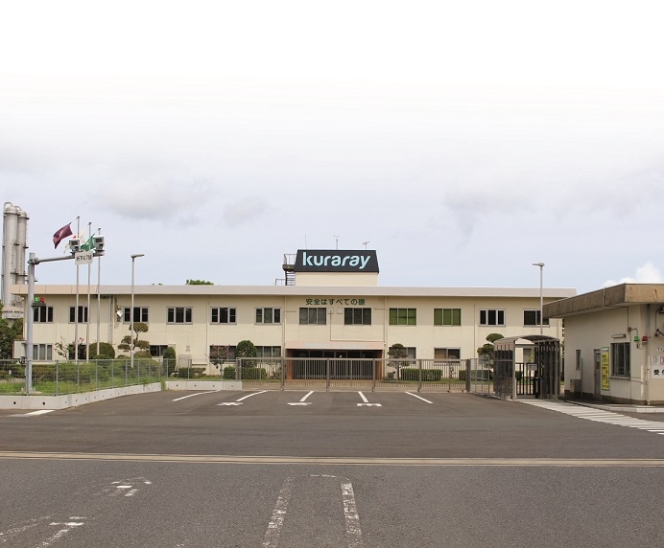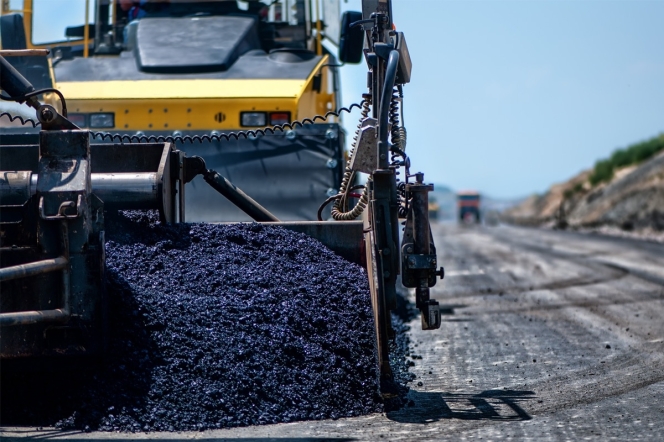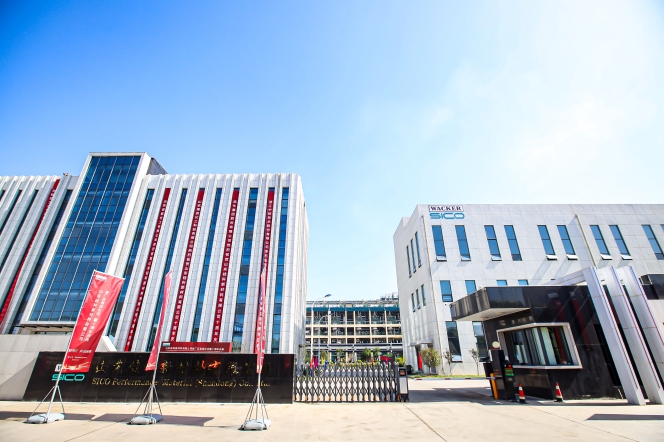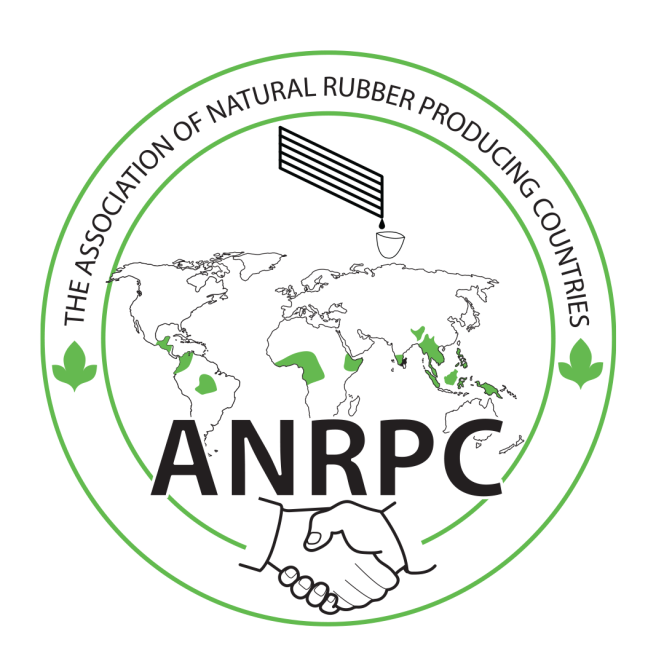
The most basic difference between an electric vehicle (EV) and internal combustion engine (ICE) tyre is that the former demands lower rolling resistance, quieter tread patterns and higher load bearing capacity. While there have been innovations within the tyre industry to meet the current demand for EV tyres, at the molecular level, research and development continues to achieve enhanced compound efficiency as tyre mixtures are complex.
As electric vehicles redefine performance benchmarks, tyre technology is undergoing a molecular-level overhaul. While the industry has focused on rolling resistance, noise reduction and load capacity, Japan’s Kuraray is pushing the boundaries deeper into the chemistry of rubber itself. By integrating silane-functionalised liquid rubbers into natural rubber-silica systems, the company aims to resolve longstanding formulation challenges. These innovations not only offer measurable improvements in abrasion resistance and wet grip but also open the door to broader adoption of sustainable materials in EV tyres. Kuraray’s work signals a strategic shift towards more efficient, adaptable and environmentally aligned tyre compounds.
Japan-based chemicals manufacturer Kuraray has dismissed all odds to achieve a more efficient molecular chemistry in tyres with its silane-functionalised liquid rubbers. In an earlier issue, Tyre Trends had reported how the company’s silane-modified rubber marked a major leap in tyre technology as it enhanced polymer interaction within the tyre, especially in natural rubber and silica-based formulations.
Coming to the present, its silane-functionalised liquid rubbers offer the reduction of rolling resistance (RR) and the resulting compound shows excellent balance of low RR, abrasion resistance and wet grip performance.
Speaking to Tyre Trends exclusively on the development, Technical Service Engineer for Quality and Product Development Department, Elastomer Division, Kuraray Co., Naoto Takahashi, divulged, “We propose to incorporate natural rubber (NR) for silica-based PCR treads. NR is preferable for its high strength and from the viewpoint of sustainability. However, the combination of NR and silica has typically been considered unusual as compounds for PCR treads. One of the reasons is that NR and silica have poor interaction, which causes decrease of physical properties.”
“Our silane-functionalised liquid rubbers can react with silica in the mixing stage and with NR in the vulcanisation stage. Using this technology, NR or silica-based compounds have been proven to have an excellent balance of lower RR and competitive abrasion resistance and wet grip compared to typical styrene-butadiene rubber, butadiene rubber and silica compounds. So we believe it has the potential for EV tyres, which require these properties,” he added.
Furthermore, using silane-functionalised liquid rubber in tyre manufacturing offers several advantages. Firstly, it provides a plasticising effect during the mixing stage, leading to lower torque and electricity consumption.
Secondly, the improved rolling resistance itself contributes to the sustainability goals by extending the driving range of EVs. Long-range EVs significantly reduce carbon dioxide emissions compared to fossil fuel-powered vehicles. This helps mitigate global warming and other climate changes. In addition, EVs with extended range reduce the burden on charging infrastructure and promote efficient energy use. Less frequent charging means reduced strain on the power grid.
Additionally, the improved performance of NR and silica compounds sheds light on the utilisation of NR, which is a kind of sustainable material. “We believe this technology could expand the potential of NR. If you are considering using more NR in your products, then this type of liquid rubber could be useful,” added Takahashi.
MIXING THE MIXTURE
Typically, it has been said that conventional silane coupling agents have poor reactivity with NR. This is not the case for silane-functionalised liquid rubbers. The liquid rubbers react with silica at the mixing stage by hydrolysis and condensation, in the same manner as silane coupling agents. As a result, the silica would be surrounded by hydrophobic liquid rubber chains. This helps silica to disperse well in the rubber matrix.
In the subsequent stage of vulcanisation, the reaction of liquid rubber chains and NR occurs. This forms bonds between two types of rubbers, effectively resulting in reinforcement of silica-NR interaction.
“We believe that these mechanisms contribute to maximising the potential of NR and silica combination,” said Takahashi.
The molecular weight of rubber is another key factor in determining the characteristics of liquid rubbers, alongside the glass transition temperature and monomer components.
Explaining how the molecular weight range of Kuraray’s liquid rubbers affect its compatibility and performance in tyre applications, the executive said, “Our liquid rubbers’ molecular weight range is strategically positioned between typical plasticisers and solid rubbers, ensuring an optimal balance of enhanced processing and physical properties.”
“Each grade’s molecular weight is precisely controlled and tailored to specific purposes and applications. Generally, liquid rubbers with lower molecular weights offer superior compatibility with other ingredients, while those with higher molecular weights provide better physical properties. Interestingly, the viscosity of liquid rubber alone does not determine the processability of compounds. We are glad to support you in selecting the ideal grade of liquid rubber to achieve your objectives,” he added.
He also noted that liquid rubbers have a low tendency to bleed out as a plasticiser because of their higher molecular weight and ability to be vulcanised. The low migration property directly affects the life span of the tyres.
Additionally, the improved abrasion resistance compared to traditional plasticisers also offers the long-term liability of tyres. “Wear particle is one of the biggest issues in today’s tyre industry because it has been recognised that it has a severe impact on the environment. The new regulation to handle this matter has been under discussion for a long time. Our silane-functionalised liquid rubbers would offer the solution to these challenges,” noted Takahashi.
COMPETITIVE EDGE
One of the characteristics of the material is its narrow molecular weight distribution. This provides the benefit of suppressing reduced physical properties due to the low molecular weight fraction. Another is that it has functional groups grafted onto the polymer chain. These functional groups seem to have different reactivity compared to other types of modification.
These features have a positive effect on the storage stability and other performances as tyres. The company highlighted that it has already found that the material would not deteriorate so much for 1-2 years in a bulk container under air.
Besides, the silane-functionalised liquid rubber technology is applicable to various types of tyres including winter and all-season tyres, and high-performance tyres. It is particularly beneficial in improving the dispersion of silica fillers, reducing compound viscosity and enhancing overall tyre performance. This technology helps achieve a balance between grip, low RR and abrasion resistance, making it suitable for a wide range of tyre applications.
Considering the characteristics of the material, another application of this type of material is TBR. Most TBR tyres use NR and carbon black (CB) compounds with less or no oils. However, using silica in place of CB in TBRs is getting more and more attention to achieve the high level of rolling resistance and wet grip performance. Here emerges the problem of NR and silica combination. As mentioned above, the silane-functionalised liquid rubbers would act as the effective additive for these kinds of compounds.
Commenting on the role of the liquid rubbers in enhancing wet or ice grip performance on winter tyres, Takahashi explained, “We have two types of silane-functionalised liquid polybutadiene with relatively higher glass transition temperature (Tg) and lower Tg. Initially,
we only commercialised the former one. However, in response to customer demand, we have developed another grade with lower Tg and are now fully equipped to mass-produce.”
“Liquid rubbers with lower Tg provide flexibility to the compounds even at low temperatures, which is particularly beneficial for the ice-grip performance of winter tyres. This flexibility ensures that the rubber remains pliable and maintains good contact with icy surfaces, enhancing traction and safety. Since the compound Tg is also highly affected by other components such as solid rubbers, plasticisers and resins, we think that our product lineup with different Tg offers freedom of choice for users’ compound formulation,” he added.
MEETING DEMANDS
The company continuously spoke with tyre manufacturers during the development of its liquid rubber. “We have instruments in our laboratory for measuring not only compound properties but also tyre performances such as wet grip and abrasion resistance. This allows us to have close and detailed technical communication with our customers,” said Takahashi.
He added, “The wet grip performance is usually expressed by the value of tanδ at 0 deg.C as an index from the viscoelasticity measurement. But the actual compound’s grip performance often shows a different result from the viscoelasticity. We have equipment to measure the friction coefficient of compounds on wet and icy surfaces, allowing us to minimise the discrepancy between viscoelasticity and grip performance.”
Alluding to how the use of silane-functionalised liquid rubber in EV tyres aligns with current trends and future directions in tyre technology, he said, “We recognise the growing trend towards sustainability as well as the importance of reducing rolling resistance and wear particles. Here, we recommend using NR more to address these issues. While the combination of NR and silica may not be the conventional choice for PCR tread compounds, we believe that our innovative approach demonstrates the potential of this formulation. The use of silane-functionalised liquid rubber offers the excellent dispersion and reinforcement of NR and silica compounds, paving the way for the solution to address future challenges in tyre technology.”
Takahashi indicated that the silane-functionalised liquid rubber can play a role in reducing the carbon footprint of tyre production. The key driver, he explained, is a measurable drop in rolling resistance, which translates into lower fuel consumption for internal combustion vehicles and reduced electricity use in EVs.
The firm also highlighted its broader sustainability efforts, noting that its liquid rubber plant is ISCC Plus-certified. From this year, Kuraray has started producing sustainable materials under a mass-balance approach – an initiative that includes its latest silane-functionalised grades, though the product range is still expanding.
On managing cost-performance trade-offs, he acknowledged that liquid rubber typically commands a higher price than traditional plasticisers. However, the benefits tend to supplement the cost.
The company pointed to challenges like dispersing high-surface-area silica in tread compounds – an area where its liquid rubber grades can provide a processing advantage. It also emphasised the potential of NR and silica combinations, made feasible with its silane-modified products, as an example of how formulation innovation can justify the premium.
Kuraray’s silane-functionalised liquid rubber represents a critical inflection point for tyre formulation – technically and environmentally. By enabling stable silica dispersion in natural rubber and forming durable crosslinks during vulcanisation, it addresses both performance and sustainability imperatives.
While the cost remains a consideration compared to traditional plasticisers, the material’s added value, such as reduced energy use, lower rolling resistance and extended tyre life, could redefine return on investments calculations for manufacturers. Its compatibility with evolving regulations on wear particles and carbon footprint reduction positions it not just as an additive but as a strategic material. The challenge ahead lies in scaling adoption without compromising economic efficiency.
Australia Issues National Crumb Rubber Asphalt Standard For Local Roads
- By TT News
- December 05, 2025

Australia has released its first national specification for the use of crumb rubber asphalt on local roads, a move intended to give councils clearer guidance on designing and maintaining light-to-medium-duty networks and to strengthen domestic recycling demand for end-of-life tyres.
The Crumb Rubber Modified Dense Graded Asphalt (CRM DGA) Model Specification for light to medium duty roads was published by the Australian Flexible Pavement Association (AsPA) following collaboration with Tyre Stewardship Australia. The document offers standardised technical requirements for councils, which manage about 75 percent of the national road network — roughly 675,000km of streets and community-level infrastructure.
Existing asphalt standards were largely developed for higher-order state roads, leaving local governments to interpret specifications that did not reflect lower traffic loads or the environmental conditions typical of suburban and regional networks. The new model specification aims to close that gap by setting guidance aligned with the factors that most influence degradation on council roads, such as surface ageing and weather exposure.
The specification promotes the use of crumb rubber modified binders, which can extend pavement life under light-to-medium-duty conditions. Incorporating recycled rubber also aligns with broader circular-economy policies across Australia’s states and municipalities, which are seeking to reduce landfill and illegal dumping while supporting domestic tyre-recycling capacity.
AfPA said the CRM DGA Model Specification V1.0, dated October 2025, is publicly available. It includes requirements for mix design and materials, construction processes such as compaction and temperature control, and performance testing suited to council networks. It also offers practical guidance on integrating reclaimed asphalt pavement content.
Local governments seeking case studies and procurement tools on crumb rubber applications can access Tyre Stewardship Australia’s Crumb Rubber Resource Centre for further technical and project information.
Flexsys Develops First Viable Industry Alternative to 6PPD in Major Breakthrough for Tyre Chemistry
- By TT News
- December 02, 2025

Flexsys has created what it says is the tyre industry’s first practical and scalable alternative to 6PPD, marking a major step toward replacing a chemical used for decades but now under regulatory pressure.
The company said the new antidegradant is the result of several years of research and testing with federal laboratories, independent scientific groups and tyre makers. Early results show the material could match the performance and safety of 6PPD while avoiding the environmental risks linked to 6PPD-quinone, a transformation product identified in 2020.
Flexsys said the new chemistry provides the short- and long-term protection needed to stop tyres cracking or ageing. It is also designed to fit into existing rubber compounds with minimal changes, which could help manufacturers adopt it quickly. The company added that the product meets environmental and regulatory benchmarks, including criteria set by the Washington State Department of Ecology.
Importantly, the new molecule is not part of the “PPD” family, meaning it does not form quinone during use. Flexsys said this would remove the environmental impact associated with 6PPD-quinone. The company is also using many of the same intermediate chemicals already used in 6PPD production. This could allow manufacturers to rely on existing factory assets and speed the shift to the new technology.
“This achievement reflects our unwavering commitment to responsible innovation, built on decades of expertise in tire protection chemistry,” said Carl Brech, Chief Executive Officer of Flexsys. “Our solution is formulated to deliver the performance and reliability that tire makers expect and is designed for future environmental and regulatory standards.”
6PPD has been essential to tyre durability for 50 years. But studies published in 2020 showed that 6PPD-quinone could harm aquatic species, including coho salmon. Regulators and tyre producers have been looking for a safer option since then. Flexsys said its new antidegradant meets this challenge without reducing tyre safety.
“Our team set out to develop a next-generation antidegradant that meets the tire industry’s highest performance standards without compromising tire safety, while also reducing toxicity,” said Neil Smith, Chief Technology and Sustainability Officer. “I could not be more proud of the perseverance and dedication of the Flexsys R&D team. Our group has been highly motivated by both the technical challenges of this project as well as the positive societal impact that this work will ultimately have.”
Flexsys acknowledged support from the Sustainable Polymers Tech Hub in Akron, Ohio, part of the U.S. EDA Tech Hubs programme.
The company is now working on process optimisation to allow large-scale production. It is also in discussions with regulators around the world to secure approvals for commercial use. Testing with tyre makers is continuing.
“Flexsys is helping set the direction of the tire industry for the coming decades with this development,” Brech said. “We will continue to work tirelessly to bring this breakthrough to the market as soon as possible.”
Wacker, SICO Open China R&D Centre to Speed Rollout of Specialty Silanes
- By TT News
- December 02, 2025

Wacker Chemie AG has strengthened its position in China’s fast-growing market for silicone specialities by opening a new application development centre with joint-venture partner SICO Performance Material in the eastern city of Jining.
The 2,300-square-metre facility brings together several laboratories focused on organofunctional silanes, which are used as high-performance additives in plastics, coatings and adhesives. By locating the centre next to SICO’s production and scale-up lines, Wacker aims to shorten development cycles and move new products into the market more quickly. The companies said investment in the site is in the mid-six-figure euro range.
Tom Koini, who leads Wacker’s silicones division, said the opening marks an important step in its China strategy. “As a provider of innovative silicone specialties and solutions, we can use this development center to achieve a key milestone for our business in China. Our focus is on high-margin specialty silanes, for which demand in China is rising continuously. This investment together with our partner SICO strengthens our presence and commitment to the region,” he said.
Wacker, which took a majority stake in SICO in 2022, is seeking to build a larger share of China’s specialty chemicals market, where demand for hybrid polymers has increased for years. These materials help improve the mechanical and chemical properties of adhesives, sealants, coatings and engineered plastics, all of which are used in sectors such as electric mobility, electronics and power equipment.
At the opening ceremony, SICO General Manager Kevin Qu called the centre an investment in the long term. “We can now pool all of our silane expertise here at our application development centre. This know-how ranges from chemical product properties and supply chain matters through to questions of process engineering and current marketing trends. We will leverage this in-depth knowledge to develop forward-looking innovations for our customers. This marks a new chapter of success in the history of our joint venture,” he said.
The companies said the centre will act as a link between research, technical service and manufacturing teams. Scientists will focus on developing additives, adhesion promoters and stabilisers based on organofunctional silanes and functional silicone fluids.
- Association of Natural Rubber Producing Countries
- ANRPC
- Natural Rubber
- Monthly NR Statistical Report
ANRPC Publishes Monthly NR Statistical Report For October 2025
- By TT News
- November 29, 2025

The Association of Natural Rubber Producing Countries (ANRPC) has released its Monthly NR Statistical Report for October 2025, providing an overview of key developments in the global natural rubber sector.
According to the report, the global natural rubber market in October was characterised by a distinct bearish trend in pricing. This decline can primarily due to a significant surge in production and export activities, which were initially stimulated by the higher prices seen earlier in the year. Meanwhile, overall demand has remained relatively subdued.

Looking ahead to the full year, projections indicate a modest 1.3 percent increase in global production for 2025, a figure that follows a recent downward revision for Indonesia. On the demand side, consumption is anticipated to grow by a slight 0.8 percent, influenced by an upward adjustment to Indonesia's consumption data. Despite the current price pressures, market sentiment shows some mixed signs of improvement, particularly within the tyre trade of certain specific markets.







Comments (0)
ADD COMMENT